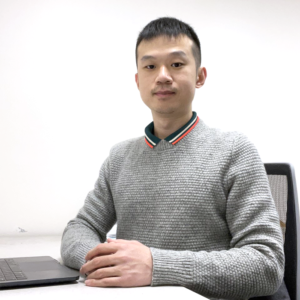
A team of University of Utah-led students, passionate about leveraging their engineering knowledge to support the economic development of rural communities, were recently announced as the winners of this year’s JUMP into STEM competition. The team, named Build-Up-Navajo, consists of Electrical and computer engineering (ECE) Ph.D. candidates Xiang Huo and Xinyang Rui, School of Architecture undergraduate Samantha Eddy and Civil Engineering Ph.D. student Xinyan Liu. Their project entitled, Advancing Resilient Communities in Remote Areas: A Self-Sustaining and Replicable Solution Based in Dennehotso took first place in the Resilience for All in the Wake of Disaster category.
The competition asked student teams from across the country to develop inclusive and holistic building solutions, focused on equal access to healthy indoor air quality, resilience for all, and accelerated market adoption. The team’s project focuses on improving the quality of life of the people of the Navajo chapter, Dennehotso, by providing reliable electricity and internet connectivity, improved air quality and indoor comfort, and uninterrupted food supply, especially during natural and man-made disasters.

“It is a pleasure to be working on this type of project. I believe this is an important part of what engineering is all about,” Rui said. “The more I learn about the community, the more I realize how essential this work is.”
Dennehotso’s sparse and spread-out land use pattern lacks the typical population density optimal for basic infrastructures. As a result, more than 40% of its 300,000 residents live without running water, electricity, proper housing, and internet access, making the community exceptionally vulnerable to disasters.
The team’s solution incorporates five components: improve the functionality of current housing through retrofitting; implement a solar-battery-based distributed microgrid for reliable power; broadband connection solutions for communication; agriculture solutions for food resources; and incorporate training programs to increase resilience and empower the residents to maintain the technical infrastructure. The project’s modular design and holistic approach make it both scalable and easily tailorable to the specific needs of other rural communities.
Under the supervision of ECE assistant professor Mostafa Sahraei-Ardakani, Rui developed the proposal for a distributed solar-battery-based microgrid as well as system sizing and installation plans. Integrated solar panels, energy storage, and backup generator systems will be distributed throughout the community, creating a highly efficient, continuous power supply with minimal power losses. He also wrote the technology-to-market plan for the project.
Under the supervision of ECE assistant professor Mingxi Liu, Huo developed an internet solution that utilizes satellite connections to create an all-wireless broadband network that will reduce issues caused by the area’s rugged terrain. He also contributed in designing the scalable distribution power network with solar energy integration.
The students will present their project during the competition’s Final Event in January 2022 and compete for a paid summer 2022 internship at National Renewable Energy Laboratory, Oak Ridge National Laboratory, or the Pacific Northwest National Laboratory. JUMP into STEM is an online competition that aims to attract bright students from various majors to building science, a technical field that encompasses grid modernization, artificial intelligence, carbon-reduction technologies and more. The competition is supported by the U.S. Department of Energy and industry sponsors.
An illustration of the proposed holistic solution in Dennehotso.